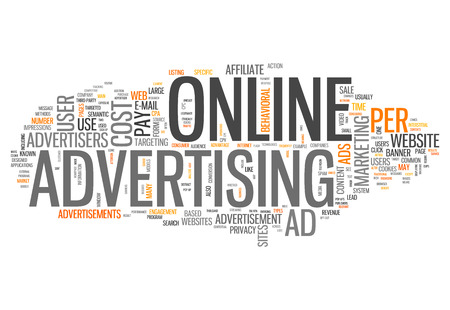Five most common online advertising mistakes

Every business needs to find a way to standout from its competitors and attract as many customers as possible. This can be done via advertising, and in the digital age, there are more ways than ever before to get your message out to the masses. While this is a good thing, it must be done properly so that you do not spend a small fortune in marketing and get nothing in return. There are a lot of mistakes that can be made in online advertising, but let us describe some of the most common:
Failing to reach your target market
This crucial mistake can lead to a lot of wasted money as you will essentially reach no existing or potential customers. For example, let’s imagine that your target audience is generally in their 30’s. You are not going to reach them if you advertise on a golden oldies radio station, no matter how attractive the advertising package is that they offer. Figure out who your target audience is, and then consider the best ways to reach them.
Putting all your eggs in one basket
As we mentioned earlier, there are numerous ways to get you message out. We are not suggesting that you try every single one of them, as some will certainly not be a good fit for your niche. What we are suggesting is that you spread around your marketing dollars a little. Even if you are sticking to advertising online, try a few different techniques, such posting on social media, PPC, email marketing, etc.
Failing to track your results
Regardless of what type of advertising strategy you choose for your business, you need to make sure it is measurable. There is no specific parameter you must measure since advertisements have different goals. Some companies will be trying to boost sales, while others will be looking at the number of visitors or sign-ups gained. Just make sure that when you setup your campaign that there is a way to measure the results you are interested in analyzing and can hence understand if the ads are helping you achieve your goal.
Not paying attention to ROI
Measuring and understanding the results of your campaign is one thing, but it is not enough, you must calculate your ROI. For example, it is easy to get excited when you see that your latest campaign resulted in 50 new sales that leading to $1,000 in revenue. That is only a great result if the cost of the advertising to get those sales was less than what you brought in. If you spent more to advertise than you earned, then it is hard to describe the campaign as successful unless you consider other aspects such as future sales gained from such ads.
Putting the focus on features instead of benefits
When advertising your product to potential customers it is a mistake to just describe its features. People viewing your ads are indeed interested somewhat in the features, but they are more interested in how your product benefits them. You will have more success helping customers understand how your product will benefit them than just describing the amazing specifications it has.
June 09, 2017 (first published March 2015)
Related
- Checklist before placing an online ad for your product
"Creating a great product is only half the battle, the other half is being able to reach your target audience and create some interest in what you have to offer. Naturally, you will need to advertise your product as effectively as possible to get the results you envision. " More
- Ideas to get more bang for your advertising buck
"In order for a business to succeed, it must introduce its products and/or services to as many people as possible. For that to happen, a solid marketing strategy must be put in place that will use multiple advertising mediums to be able to maximize its reach. " More
- Five ways to geo-target your ads to get more sales
"If you follow the internet marketing industry, you have already heard of the massive benefits some companies are reaping by using geo-targeting techniques to reach more specific segments of their demographic. Reaching the right people, who are already primed for your message, results in significant gains to both conversions and overall sales. " More
 Every business needs to find a way to standout from its competitors and attract as many customers as possible. This can be done via advertising, and in the digital age, there are more ways than ever before to get your message out to the masses. While this is a good thing, it must be done properly so that you do not spend a small fortune in marketing and get nothing in return. There are a lot of mistakes that can be made in online advertising, but let us describe some of the most common:
Every business needs to find a way to standout from its competitors and attract as many customers as possible. This can be done via advertising, and in the digital age, there are more ways than ever before to get your message out to the masses. While this is a good thing, it must be done properly so that you do not spend a small fortune in marketing and get nothing in return. There are a lot of mistakes that can be made in online advertising, but let us describe some of the most common: